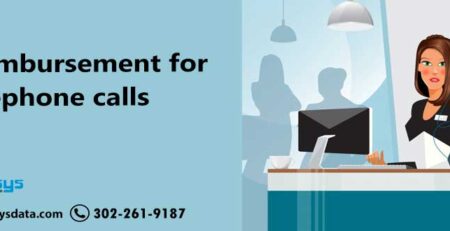Nowadays, healthcare providers and payers are concentrating on medical credentialing in order to enhance multiple aspects such as accuracy advancement, reducing the possibility of reworking, substantial cost savings, and turnaround time improvement that ultimately increases revenue performance. Medical credentialing termed as a market-driven procedure, which pursues to manage quality standards in the medical community for the well-being of patients. The procedure contains direct contact with primary sources in order to verify the qualification of healthcare providers.
Role of CVO
The credentialing organization, which is the authority for medical credentialing, known as a Credentials Verification Organization (CVO). The duties of the organization involve communicating with universities where providers completed their medicine education, did their internship, to verify, confirm, and review their credentials such as licenses or certifications. Though medical credentialing looks a very simple process, it can be a confusing and complex practice, since different healthcare providers need multiple types of certification as well as education. Credentialing is essential for new graduates and new hires .However, it accomplished at regular time interval even after appointing new graduates in order to follow the standards of an accrediting and regulatory organization such as The Centers for Medicare and Medicaid Services (CMS), The Joint Commission (TJC), and the National Committee for Quality Assurance (NCQA).
Credentialing consists of two divisions, one is credentialing and the other is privileging. Credentialing is the reviewing expertise while privileging is giving approval for a healthcare practitioner to perform certain processes based on the manifestation of competency.
Benefits of medical credentialing
Medical credentialing offers quality assertion to the medical industry that advantage all involved parties. Clinics as well as hospitals may be self-assured that the staff they employ to offer care as per the guided standards. Payers operate on the incentive-based model that leads to cut down their costs and so select to make sure only those professionals who manifest enough competence to practice medicine.
Providers have advantage from medical credentialing, once they get entitlement to obtain clients from payers so that they can increase their patient base. Last but not the least, patients receives the majority of the advantages among all parties, which is the medical industry is sustaining stringent standards to make sure the offered health care is of the standard quality. The benefits of medical credentialing are that it keeps self-assurance in the medical professions’ quality, reduces medical errors, and maintain optimal costs. This system ensures that everybody is equally benefitted from the system.
Who need medical credentialing?
Medical credentials are needed for multiple healthcare providers such as:
- Chiropractors
- Podiatrists
- Psychologists
- Ophthalmologists
- Dentists
- Marriage and Family Therapists
- Physician Assistants
- Physicians
- Optometrists
- Counselors
- Social Workers
- Advanced Practice Nurses
The credentialing system is wide and detailed. It comprises of all healthcare characteristics and associated services to ensure high-quality standards.
Work restrictions for a practitioner during credentialing
A healthcare practitioner is unable to work in between credentialing. He/she have to wait until the approval and completion of the credentialing procedure before they initiate their practice. This guarantees each patient at whole times that they get care from providers who possess thorough knowledge, experience, and training to diagnose and treat their healthcare issues. If a practitioner allows working meanwhile the credentialing process, a facility is setting itself at legal risk at the same time in jeopardy of failing its own credentials as an institution.
Medical students, fellows, and residents do not require credentialing until and unless their work inscribed within the boundary of their training schedule. In addition to this, credentialed professionals keep an eye on them; nevertheless, they have not accomplished their training program and therefore not allowed for credentialing as well as privileging. So an excuse is made to permit them to receive the experience that leads to permit them to get their credentials as well as privileges.
Services require for credentialing
It is not only providers but also facilities themselves that require keeping care standards and competence. The following types of services and facilities are bound to acquire and manage the correct credentials to work as practitioners comprise of the service mentioned below.
- Diabetes Education Providers
- Lithotripsy
- Home Health Services
- Alcohol and Drug Recovery Centers
- Dialysis
- Laboratories and Laboratory Collection Sites
- Hospice Care
- Durable Medical Equipment
- Ambulances
- Prosthetics / Orthotics
- In-Home Care Services
- Radiology/Diagnostic Imaging
- Sleep Disorder and Sleep Study Clinics
- IV Home Infusion Therapy
- Independent Diagnostic Testing
Credentialing facilities as well as providers, the system worked as insulation for patients. Many facilities are emphasizing on different medical credentialing services and outsourcing medical credentialing services that will definitely enhance facility’s revenue performance cycle and cut down operational costs.
Credentialing facilities as well as providers, the system worked as insulation for patients. Many facilities are emphasizing on different medical credentialing services and outsourcing medical credentialing services that will definitely enhance facility’s revenue performance cycle and cut down operational costs.
Ready to outsource your medical credentialing? Request a call back.












